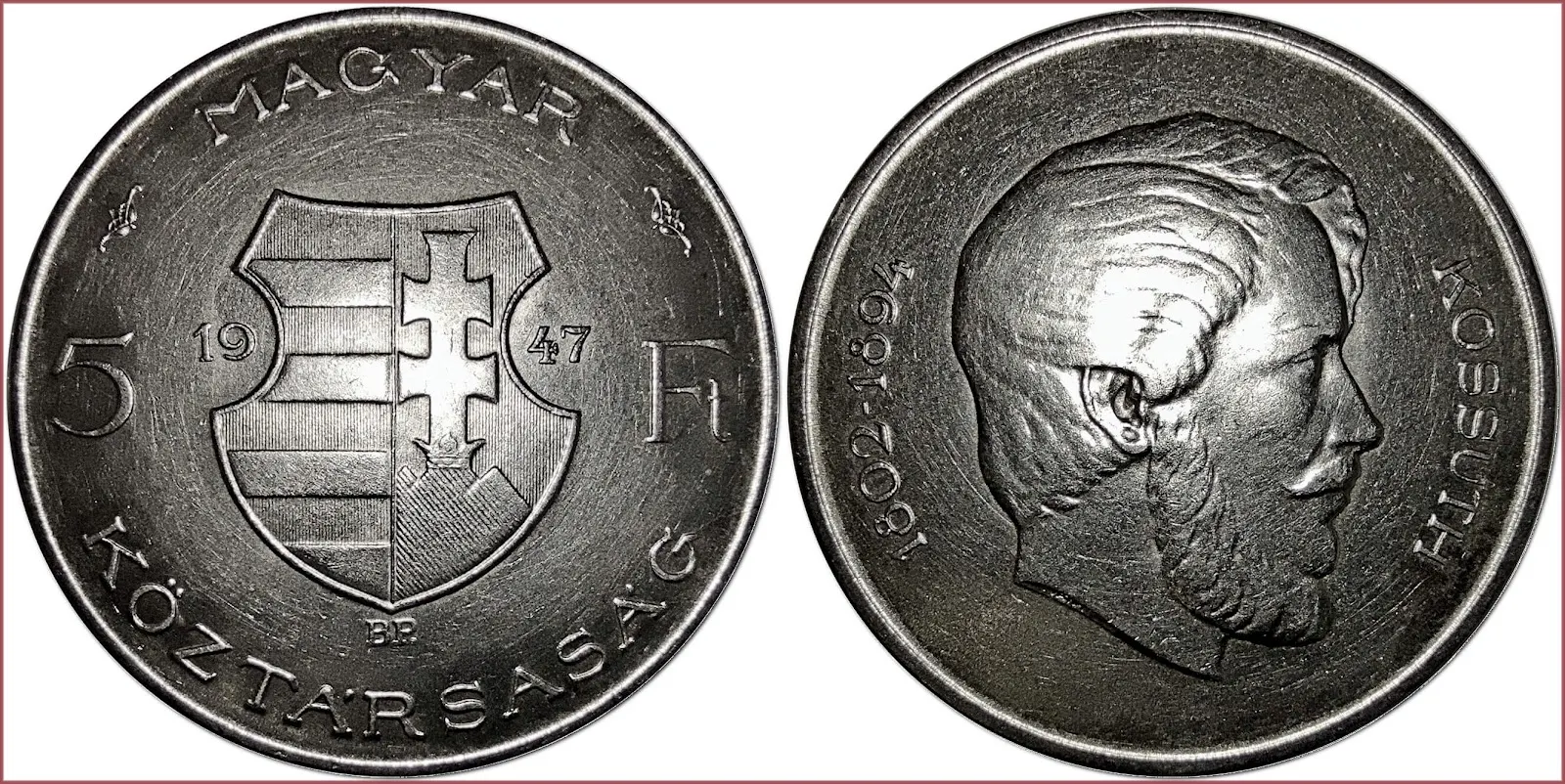FORINT: COIN OF HUNGARY
5 forint, 1947: Hungarian Republic
MAGYAR KÖZTÁRSASÁG: Hungarian Republic.
5 Ft: 5 forint.
Coat of arms of Hungary, 1946-1949 ("Kossuth coats of arms of Hungary").
BP: Budapest Mint (Capital City of Hungary).
1802-1894 — KOSSUTH: portrait of Lajos Kossuth — a Hungarian nobleman, lawyer, journalist, politician, statesman and governor-president of the Kingdom of Hungary during the revolution of 1848-1849 (one of the most significant events in Hungary's modern history, forming the cornerstone of modern Hungarian national identity).
Engraver: Iván István.
Micro inscription on the edge of the coin: M Á P V (Magyar Állami PénzVerő — Hungarian State Mint).
Mintage: 10.004.252.
- Silver (0.500): 32 mm - 12.15 g
- Reference price: 10$
COIN FORINT — WHERE & WHEN (coins catalog: by names & emitents)
- HUNGARY (14th century-...) — KINGDOM OF HUNGARY + SECOND HUNGARIAN REPUBLIC + HUNGARIAN PEOPLE'S REPUBLIC + HUNGARY: forint = 100 filler
As for the history of the origin of the name forint coin, it is similar to the emergence of the term "florin": both coins names owe their appearance to the gold coin minted in the 13th century in Florence (Italy) "fiorino d'oro".
The first Hungarian forints appeared in the Middle Ages and were gold coins.
In the 19th century, the forint was the name used in Hungarian for the currency of the Austro-Hungarian Empire, known in German as the gulden or florin (on banknotes the denomination was indicated in guldens, on coins — in florins).
The modern forint was restored in 1946.

